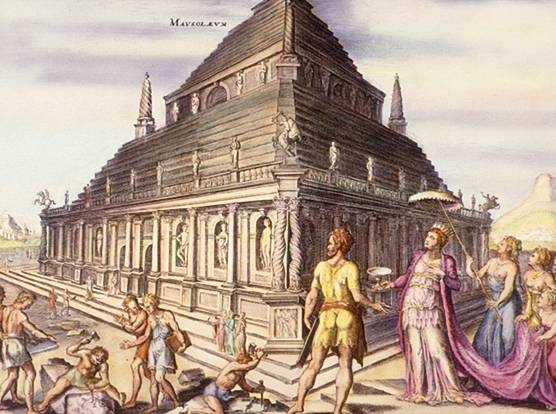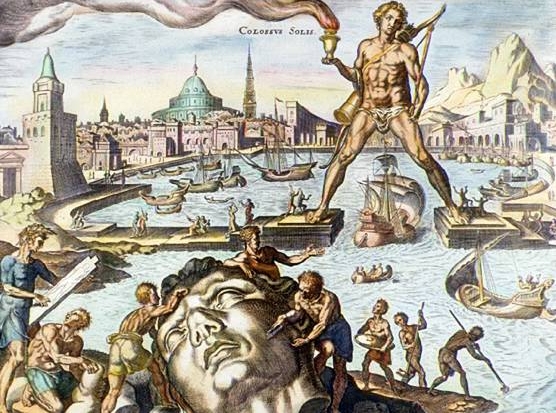Las 7 Maravillas del mundo antiguo / The 7 Wonders of the ancient world
Las 7 Maravillas del mundo antiguo
The 7 Wonders of the ancient world
- Algunas de las construcciones antiguas más impresionantes del mundo
- Some of the most impressive ancient buildings in the world
Las siete maravillas son grandes obras arquitectónica o de ingeniería que han sido construidas a lo largo de la historia. Las primeras recopilaciones de lugares notables para visitar fueron hechas por los antiguos viajeros griegos como recomendaciones para nuevos turistas, también esta es la razón de por qué están todas cerca del Mediterráneo (Hola.com, 2021; Wilkes, 2020). Estas 7 maravillas a lo largo de la historia han ido cambiando, a continuación, la lista más conocida en la actualidad:
The seven wonders are great architectural or engineering works that have been built throughout history. The first compilations of notable places to visit were made by ancient Greek travelers as recommendations for new tourists, also this is the reason why they are all close to the Mediterranean (Hola.com, 2021; Wilkes, 2020). These 7 wonders throughout history have been changing, below is the best known list today:
1) La gran pirámide de Guiza: Se encuentra en Egipto y es la única de las 7 maravillas que aún existe, fue construida alrededor del año 2500 A.C. Su tamaño es de 146.5 metros y fue la estructura más grande del mundo hasta que fue construida la catedral de Lincoln en el siglo XIV.
1) The great pyramid of Giza: It is located in Egypt and is the only one of the 7 wonders that still exists, it was built around 2500 BC. Its size is 146.5 meters and it was the largest structure in the world until Lincoln Cathedral was built in the 14th century.
Nina at the Norwegian bokmål language Wikipedia, CC BY-SA 3.0 <http://creativecommons.org/licenses/by-sa/3.0/>, via Wikimedia Commons
2) Jardines Colgantes de Babilonia: Aunque existen relatos, esta maravilla no se sabe si existió. En caso de haber existido, fueron construidos por el rey Nabucodonosor II, en el año 600 A.C.
2) Hanging Gardens of Babylon: Although there are stories, this wonder is not known if it existed. If they existed, they were built by King Nebuchadnezzar II, in 600 BC.
UnknownUnknown, Public domain, via Wikimedia Commons
3) Templo de Artemisa: Este templo existió en la actual Efeso, Turquía y fue destruido en el 401 D.C. aún se conservan algunos restos en el Museo Británico.
3) Temple of Artemis: This temple existed in present-day Ephesus, Turkey and was destroyed in 401 AD. some remains are still preserved in the British Museum.
Zee Prime at cs.wikipedia, CC BY-SA 3.0 <http://creativecommons.org/licenses/by-sa/3.0/>, via Wikimedia Commons
4) Estatua de Zeus: Esta estatua de 12 metros fue construida en el 435 A.C. por Fidias y existió por 8 siglos, su destrucción fue aproximadamente en el 426 D.C.
4) Statue of Zeus: This 12 meter statue was built in 435 BC. by Phidias and existed for 8 centuries, its destruction was approximately in 426 A.D.
Maarten van Heemskerck, Public domain, via Wikimedia Commons
5) Mausoleo de Halicarnaso: Fue la tumba de Mausolo, gobernador o zátrapa de Caria, el mausoleo fue construido por su esposa Artemisia en el 353 A.C.
5) Mausoleum of Halicarnassus: It was the tomb of Mausolo, governor or zatrapa of Caria, the mausoleum was built by his wife Artemisia in 353 BC.
6) Coloso de Rodas: Fue construido en el 282 A.C.
en honor al dios sol Helios para celebrar un triunfo militar. La estatua estuvo
en pie por casi 60 años y fue destruida por un terremoto en el año 266 A.C. Sus
restos permanecieron en el suelo por más de 800 años y fueron un atractivo
turístico del lugar.
6) Colossus of Rhodes: It was built in 282 BC. honoring the sun god Helios to celebrate a military triumph. The statue stood for almost 60 years and was destroyed by an earthquake in 266 BC. His remains remained on the ground for more than 800 years and were a tourist attraction of the place.
Maarten van Heemskerck, Public domain, via Wikimedia Commons
7) El Faro de Alejandría: Fue un faro de aproximadamente 140 metros, construido en el 280 A.C., durante el reinado de Ptolomeo II.
7) The Lighthouse of Alexandria: It was a lighthouse of approximately 140 meters, built in 280 BC, during the reign of Ptolemy II.
Prof. Hermann Thiersch (1874–1939), Public domain, via Wikimedia Commons
Referencias / References:
Wilkes, J. (2020).
Las 7 maravillas del mundo antiguo: ¿quién las escogió, cuáles son y qué
fue de ellas?. BBC History
Revealed. https://www.bbc.com/mundo/noticias-54112492
Hola.com. (2021). ¿Qué queda de las Siete Maravillas del
Mundo Antiguo? https://www.hola.com/viajes/galeria/20210210184135/las-siete-maravillas-del-mundo-antiguo/1/
Cómo citar este artículo:
Nocetti, F.A. (2021). Las 7 Maravillas del mundo antiguo. NabbuBlog. http://nabbublog.blogspot.com/2021/07/las-7-maravillas-del-mundo-antiguo-7.html
How to cite this article:
Nocetti, F.A. (2021). The 7 Wonders of the ancient world. NabbuBlog. http://nabbublog.blogspot.com/2021/07/las-7-maravillas-del-mundo-antiguo-7.html














